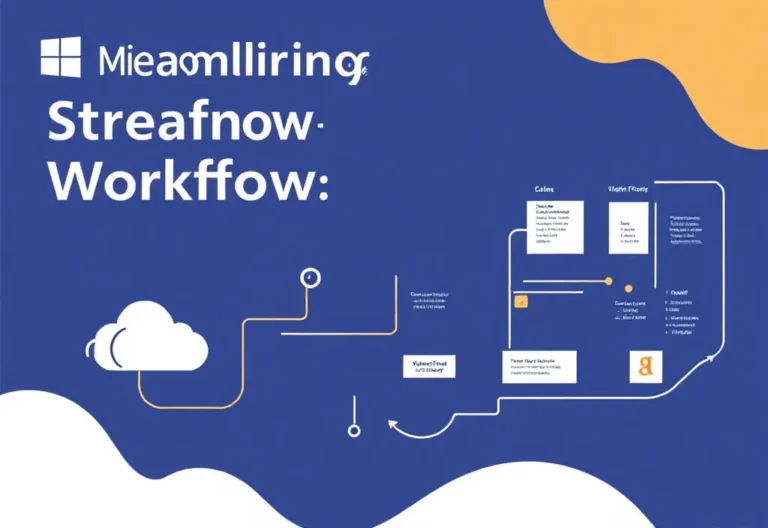How to Keep Your Business Running Smoothly with a Regular IT Refresh Schedule

How to Keep Your Business Running Smoothly with a Regular IT Refresh Schedule
There’s nothing more frustrating than a frozen screen or a slow computer grinding your work to a halt. If you run a small business, chances are you’ve dealt with outdated tech more times than you can count.
Sure, squeezing a few extra months out of old laptops or desktops might seem cost-effective at first. But in reality, relying on aging equipment often ends up costing you more in the long run — through lost time, poor performance, and unexpected breakdowns.
In fact, studies show that small businesses lose around 98 hours per year (roughly 12 working days) due to outdated technology like sluggish PCs and worn-out laptops.
That’s why having a smart IT refresh plan makes all the difference. It helps you stay ahead of problems, keep your team productive, and avoid last-minute emergencies.
Whether you manage your own IT or work with a managed service provider, a solid refresh strategy is an investment in your business’s stability, security, and future.
Why You Need a Plan Before Things Break
It’s tempting to ignore old hardware until something stops working. But when that happens, you’re suddenly dealing with unplanned costs, downtime, and frustrated employees — not to mention explaining delays to clients.
The truth is, running on outdated systems brings real risks:
- Unexpected Downtime : A single broken laptop can stall a whole day’s work
- Slower Performance : Older machines struggle with modern software, hurting productivity
- Security Gaps : Outdated devices miss critical updates, leaving you exposed
- Compliance Risks : Especially if your industry requires up-to-date systems
A little planning now can prevent a lot of chaos later.
4 Practical Ways to Build a Smarter IT Upgrade Plan
You don’t need a big budget or a team of experts to make smart upgrades. What matters most is having a clear, manageable strategy tailored to your business needs.
Here are four simple approaches to get started:
1. Replace as Needed – With a Plan
This method works well if you prefer fixing things until they truly can’t be fixed anymore — but with a smarter twist.
Instead of replacing everything at once, upgrade gradually. When a device starts acting up or reaches its expected lifespan, swap it out. Not sure when that is? Your IT support team can help you set realistic replacement timelines based on warranty length, performance levels, and compatibility with your tools.
Spreading out purchases this way keeps costs low and surprises even lower.
2. Schedule Regular Hardware Upgrades
If your business depends heavily on tech — or you’d rather not wait for something to fail — setting a regular refresh cycle can give you peace of mind.
Many small businesses find that refreshing every three years works well. Here’s why:
- Keeps your systems fast and reliable
- Helps you plan and budget ahead
- May allow bulk purchase discounts
It’s a proactive way to stay current without waiting for tech failures to force your hand.
3. Watch for Software Compatibility Issues
New software updates often require more powerful hardware than older machines can handle. And sometimes, new apps won’t even install on outdated operating systems.
Waiting until something breaks or becomes incompatible puts you in emergency mode. That’s why it pays to have your IT partner regularly check that your hardware still supports your software stack — kind of like a yearly physical exam for your tech.
4. Consider Leasing Instead of Buying
Buying brand-new tech outright isn’t always feasible, especially for smaller teams. If upfront costs are holding you back, leasing could be a smart alternative.
Many IT providers offer flexible leasing plans that include:
- Lower monthly payments
- Easy upgrades every few years
- Included maintenance and support
Leasing lets you get the latest gear without draining your cash flow.
Keep Track with a Simple Hardware Register
One of the easiest ways to stay on top of your tech is by keeping a hardware register — basically, a spreadsheet that tracks:
- What devices you own
- When each was purchased
- Warranty expiration dates
- Known issues
- Who uses them
This simple list removes the guesswork from planning. Instead of wondering “when did we buy that?” you’ll have clear records to guide your decisions.
Benefits of a hardware register:
- Spot patterns before devices fail
- Budget more accurately
- Get better deals from vendors
- Reduce security risks from forgotten old machines
The Real Cost of Waiting Too Long
Let’s be honest: trying to save money by sticking with outdated tech often backfires.
Older devices slow down your team, increase support requests, and leave you vulnerable to cyber threats. And once everything becomes obsolete at once, upgrading gets expensive and stressful.
The best approach? Stay just ahead of the curve — not miles behind it.
Your Next Steps Toward a Better IT Strategy
Ready to stop reacting to tech emergencies and start planning ahead?
Here’s how to get started:
- Take Inventory : Write down what devices you have and how old they are
- Set Goals : Are you hiring, switching software, or moving to the cloud? Align your plan with your business goals
- Talk to Your IT Provider : They can help with timing, budgeting, and options like leasing or bulk purchases
- Create a Schedule : Whether you replace one device at a time or in cycles, a plan beats improvisation
- Review Annually : Check in twice a year to stay on track
Stay Ahead by Planning Smart Tech Upgrades
Technology should empower your business — not slow it down. With a bit of planning, you can avoid sudden breakdowns, reduce downtime, and ensure your team has the tools they need to succeed.
An IT refresh strategy isn’t just about replacing old computers. It’s about protecting your productivity, strengthening your security, and building a business that’s ready for the future.
When your tech runs smoothly, so does everything else.
Need help creating a custom IT refresh plan for your small business? Contact us today — we’ll help you build a practical, cost-effective strategy that grows with your company.





